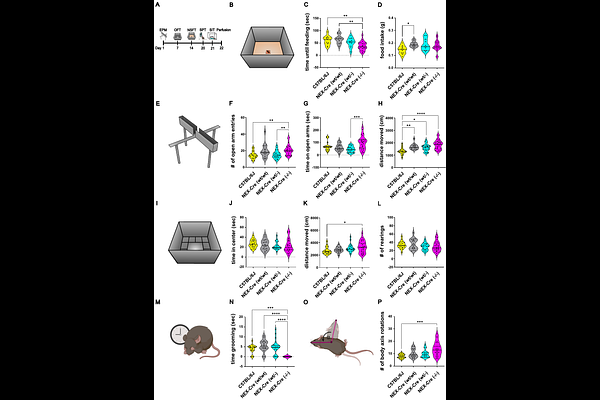Uncovering Hidden Phenotypes in NEX-Cre Mice: Behavioral and Cellular Alterations Demand Re-Evaluation of a Widely Used Transgenic Line

Uncovering Hidden Phenotypes in NEX-Cre Mice: Behavioral and Cellular Alterations Demand Re-Evaluation of a Widely Used Transgenic Line
Renken, K.; Masseck, O. A.
AbstractTransgenic mouse strains are essential tools in neuroscience, enabling targeted genetic manipulations to investigate brain function and neurological diseases. The NEX-Cre mouse line, which targets glutamatergic principal neurons in the neocortex and hippocampus by expressing Cre-recombinase under the NEX (NeuroD6) promotor, has been widely used for conditional gene manipulation. Contrary to previous reports suggesting no behavioral and histological abnormalities in NEX-Cre mice, our study reveals distinct behavioral and cellular phenotypes. Behavioral analyses indicate reduced anxiety-like behavior, anhedonia, and increased locomotor activity in NEX-Cre (-/-) mice. Additionally, SVM analysis uncovered subtle strain-specific and genotype-specific behavioral traits across all NEX-Cre genotypes relative to the commonly used C57BL/6J mouse strain. Histological analyses of Golgi-Cox-stained brain slices revealed alterations in dendritic spine density across key brain regions, including the caudate putamen, hippocampal CA1, nucleus accumbens core region, lateral septum, and medial prefrontal cortex. These findings highlight significant inter- and intra-strain variability, emphasizing the importance of careful characterization of transgenic models and the need for appropriate control groups and experimental designs to ensure the reliability and validity of studies utilizing Cre- Driver lines.